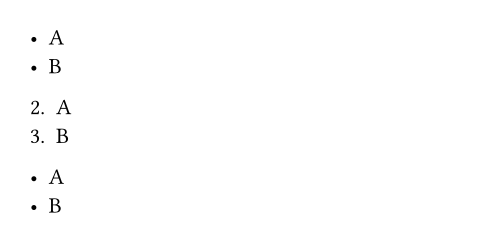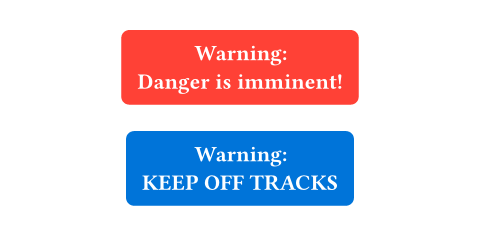function
A mapping from argument values to a return value.
You can call a function by writing a comma-separated list of function
arguments enclosed in parentheses directly after the function name.
Additionally, you can pass any number of trailing content blocks arguments
to a function after the normal argument list. If the normal argument list
would become empty, it can be omitted. Typst supports positional and named
arguments. The former are identified by position and type, while the later
are written as name: value.
Within math mode, function calls have special behaviour. See the math documentation for more details.
Example
// Call a function.
#list([A], [B])
// Named arguments and trailing
// content blocks.
#enum(start: 2)[A][B]
// Version without parentheses.
#list[A][B]

Functions are a fundamental building block of Typst. Typst provides functions for a variety of typesetting tasks. Moreover, the markup you write is backed by functions and all styling happens through functions. This reference lists all available functions and how you can use them. Please also refer to the documentation about set and show rules to learn about additional ways you can work with functions in Typst.
Element functions
Some functions are associated with elements like headings or tables. When called, these create an element of their respective kind. In contrast to normal functions, they can further be used in set rules, show rules, and selectors.
Function scopes
Functions can hold related definitions in their own scope, similar to a
module. Examples of this are
assert.eq or list.item. However, this
feature is currently only available for built-in functions.
Defining functions
You can define your own function with a let binding that has a parameter list after the binding's name. The parameter list can contain mandatory positional parameters, named parameters with default values and argument sinks.
The right-hand side of a function binding is the function body, which can be a block or any other expression. It defines the function's return value and can depend on the parameters. If the function body is a code block, the return value is the result of joining the values of each expression in the block.
Within a function body, the return keyword can be used to exit early and
optionally specify a return value. If no explicit return value is given, the
body evaluates to the result of joining all expressions preceding the
return.
#let alert(body, fill: red) = {
set text(white)
set align(center)
rect(
fill: fill,
inset: 8pt,
radius: 4pt,
[*Warning:\ #body*],
)
}
#alert[
Danger is imminent!
]
#alert(fill: blue)[
KEEP OFF TRACKS
]

Unnamed functions
You can also created an unnamed function without creating a binding by
specifying a parameter list followed by => and the function body. If your
function has just one parameter, the parentheses around the parameter list
are optional. Unnamed functions are mainly useful for show rules, but also
for settable properties that take functions like the page function's
footer property.
#show "once?": it => [#it #it]
once?

Note on function purity
In Typst, all functions are pure. This means that for the same arguments, they always return the same result. They cannot "remember" things to produce another value when they are called a second time.
The only exception are built-in methods like
array.push(value). These can modify the values they are
called on.
定义
函数和类型可以有与其关联的定义 (成员或方法)。可以使用 "." 操作符来访问调用它们。
with
Returns a new function that has the given arguments pre-applied.
arguments
The arguments to apply to the function.
where
Returns a selector that filters for elements belonging to this function whose fields have the values of the given arguments.
fields
The fields to filter for.